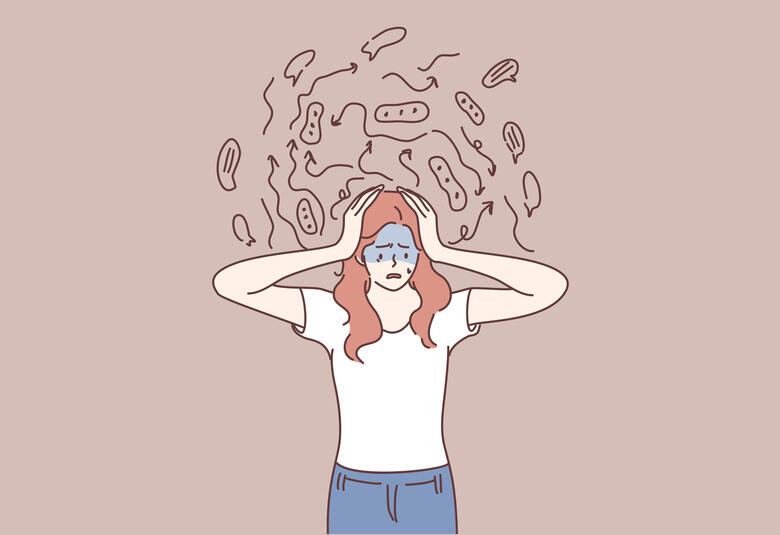Dopamine neurotransmission is critical to attention, working memory and behavioural flexibility. In situations of cognitive demand – dopaminergic projections to the prefrontal cortex are activated. In trying to understand what dopamine does in the prefrontal cortex and what goes wrong in schizophrenia – scientists have studied a number of animal models to try to elucidate pathways and implicate the changes that may be important to disease aetiology, prodromal and symptomatic stages of schizophrenia. This article reports highlights from a symposium at CINP 2016 “New findings about what dopamine does in the prefrontal cortex: relevance to schizophrenia” chaired by Professor Bita Moghaddam, of the Department of Neuroscience and Psychiatry, University of Pittsburgh in the USA.
Alterations and aberrations in dopaminergic function are thought to be highly relevant to schizophrenia pathology and behaviours. During a symposium at CINP 2016 which built on some of the themes discussed during Professor Abi-Dargham’s plenary lecture at CINP (see Progress in Mind: Multifaceted aspects of dopamine dysfunction in schizophrenia http://progress.im/en/content/multifaceted-aspects-dopamine-dysfunction-schizophrenia), international scientists described research work which is helping map and track the changes in dopaminergic circuitry and function that may be pertinent in schizophrenia.
Burst firing
Professor Moghaddam has studied burst firing of dopaminergic neurons in animal models to examine dopaminergic innervation of the prefrontal cortex. Using optogenetics and rat models which allow for selective stimulation VTA dopamine neurons and simultaneous fMRI to assess haemodynamic changes, it has been shown that phasic activation of VTA dopamine neurons increases signals in VTA-innervated limbic regions including the ventral striatum.
When dopamine neurons were stimulated using burst paradigms that resemble the activity of these neurons during motivated behaviours, this was found to increase the power of high gamma but not low gamma oscillations in the medial prefrontal cortex. Professor Moghaddam said that such studies suggest bursting dopamine neurons may modulate cortical network activity in ways that are relevant to goal directed behaviours and cognitive processes.
Expanding on this theme, Professor Pascal Steullet of the Centre for Psychiatric Neuroscience, University of Lausanne, Switzerland, reminded the audience that dopamine is released in the prefrontal cortex during cognitive tasks involving attention, working memory and decision making.
Too much, too little, too late
He described animal studies that have attempted to study the impact of dopamine on prefrontal network activity under conditions that may mimic or model schizophrenia and its evolution. Professor Steullet explained that animal studies suggest that under normal conditions, dopamine may modulate fast oscillatory activity within a local network of excitatory and inhibitory neurons, thereby improving information processing requiring high-frequency neuronal synchronization within the anterior cingulate cortex. Thus he said, when there is a blunted prefrontal dopamine release in the prefrontal cortex, as has been described in patients with schizophrenia, this conceivably contributes to impairment in the high-frequency oscillations that are induced during cognitive tasks.
Professor Steullet also described research linking hyperdopaminergic activity and oxidative stress during critical stages in an animal’s development. He said that exposure to excessive dopamine changes in the integrity of parvalbumin (PV) interneurons, so leading to impairments in normal high frequency neuronal synchrony. Professor Steullet said that in mice with a genetic susceptibility to oxidative stress, excess or chronic release of dopamine caused by psychosocial stress affects the normal maturation of PV interneurons, leading to life-long changes in cortical high-frequency neuronal synchrony.
He therefore said that basic research studies seem to indicate that too much dopamine in childhood on the one hand, or hypodopaminergy later in life on the other hand, can each impair neuronal synchrony in the prefrontal cortex in ways that are probably important to schizophrenia pathology.
Variations and ensembles
Work by Professor Abi-Dargham and colleagues, imaging the brains of treatment naïve patients with schizophrenia and healthy matched controls provide clinical evidence that there is reduced dopamine release in the dorsolateral prefrontal cortex in schizophrenia which can be shown to relate to alterations in working memory-related activation and performance.
Other evidence presented during the symposium which helps piece together a picture of how fluctuations in tonic dopamine levels may relate to behaviours was presented by Professor Stan Floresco, of the Department of Psychology and Brain Research at the University of British Columbia in Vancouver, Canada.
He is interested in trying to understand the different dopamine ensembles at play during normal decision-making and in the weighing up of risk, benefit and reward. Professor Floresco reminded that these functions are disrupted in psychiatric disorders such as schizophrenia. He described preclinical studies which show that these types of decisions are mediated in part by dopamine activity within the medial prefrontal cortex. According to Professor Floresco, dynamic fluctuations in tonic prefrontal dopamine transmission appear to encode distinct types of information related to changes in reward availability. Further, he said that behavioural studies in animal models indicate that dopamine D1 and D2 receptors in the prefrontal cortex are involved in dissociable, yet complementary, contributions to risk-reward judgments.
D1 and D2 decision-making
Professor Floresco said that D1 receptor activity appears to promote exploitation of current favourable circumstances, while activation of D2 receptors within the prefrontal cortex promotes exploration of more profitable options when conditions change. In addition, he said that these dissociable actions of D1 or D2 receptor subtypes exert their differential effects via distinct subcortical output pathways. Therefore, selectively disrupting D1 modulation of prefrontal projections to the ventral striatum (but not prefrontal-amygdala projections) reduced preference for large/risky rewards, which was driven primarily by a reduction in reward sensitivity and an increased sensitivity to non-rewarded actions. In contrast, disrupting D2 modulation of prefrontal projections to the basolateral amygdala impaired the ability to update decision biases in response to changes in reward probabilities.
According to Professor Floresco, these findings may help improve the understanding of how perturbations in dopaminergic microcircuitry relate to impaired reward processing and decision making observed in schizophrenia and other psychiatric disorders.
Our correspondent’s highlights from the symposium are meant as a fair representation of the scientific content presented. The views and opinions expressed on this page do not necessarily reflect those of Lundbeck.




